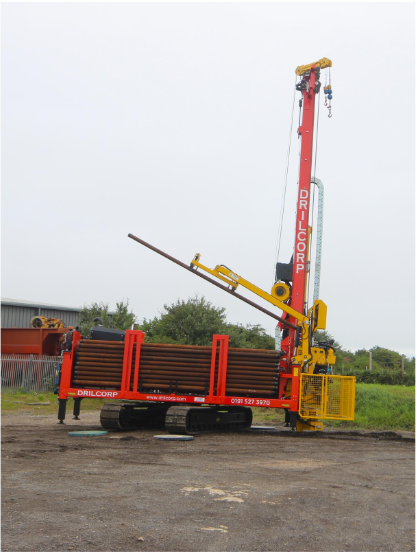Water Monitoring
In a recent project our Geotechnical Exploration Services (GES) carried out the drilling of three boreholes for water monitoring on a quarry in Northumberland. The quarry was looking to re-open and begin operations but as part of the process hydraulic testing was required to determine the origin of water within a lake which had formed on site.
Mineral Exploration
On another quarry in Scotland the quarry owners needed to establish the amount of basalt on the site which could be used for mineral exploration, GES carried out the drilling of five boreholes using a Geobore S Wireline system. The boreholes were drilled to 25 metres and then samples were analysed for the depth and quality of the basalt. The boreholes were backfilled with bentonite pellets.
Methane Gas Monitoring
Gas monitoring is also an important regulatory consideration and GES carried out two boreholes to a depth of 80 metres at a quarry in the North East. Monitoring wells can be installed and usually consist of a 50mm HDPE plastic pipe. Gas bungs are fitted to allow for regular samples to be taken.
Water Abstraction
Where a water abstraction borehole is required our Borehole Engineering Services can advise on licensing and abstraction rates. In a recent project BES helped a quarry in North Yorkshire to obtain a licence to extract 10 cubed of water per hour from a borehole. Their current water supply was from a manmade lake but this was failing to supply enough water.
Borehole Engineering Services (BES) work regularly with the Environment Agency (EA) and were required on this occasion to complete a water features survey on the site. A Water features survey involves a visit to site to check for any water courses in a 500m circle from the borehole location. Following our investigations, we found two ground water monitoring boreholes inside the quarry and a manmade lagoon. The findings were sent to the EA and they granted permission to drill a borehole on site along with a pumping test regime on completion.
Drilcorp work regularly in the quarry industry and have dedicated teams and specialisms for any project. If you need any advice or guidance on your next project give us a call.
Scott Burt GES
Michael Bushby BES
John Gowans Drilling Services
Contact Drilcorp for UK-wide drilling and borehole services for both business and home needs, including geothermal and environmental solutions.
